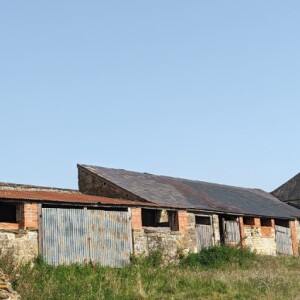Unfulfilled
Banbury is the only major urban area in north Oxfordshire, north of Oxford. It sits at the intersection of main roads from Stratford and Coventry in the north, Swindon and Oxford in the south. East and west it is possible to meander in and out of town along old minor roads through sleepy villages and mixed farnland, keeping an eye open for squirrels, pheasants, rabbits, and even deer and (at night) badgers
One such minor road leads to the village of Broughton - somewhat renound for its 'castle', the ancestral home of the aristocratic Fiennes family (sometime actors or explorers), immortalised in the rhyme as the 'Fine lady upon a white horse'. Skirting the edge of the castle, and winding into deep countryside, is a single-track lane that passes a farmstead and very little else, but halfway along its deserted 2km is a modern, transport-department road sign pointing confidently down a steep, potholed, stone-strewn track to a 'Fulling Mill'
This is a little disingenuous. The track descends quickly to the Sor Brook and, right beside the path it is easy to make out a mill leat, diverting some of the flow under the track and into what looks like a largely disused farmyard on the other side. I took some pictures of the charmingly delapidated buildings, all the while thinking that none of them look much like a mill and all of them are distant from the leat
Fulling was hard and disgusting work, a stage in the process of making woollen cloth - treating the freshly-woven fabric to remove lanolin and other contaminants, and then to shrink it and make it stronger and waterproof. It relied on using the ammonium salts in stale human urine supplemented, by the time a mill was working in Broughton in 1444, by fullers earth - a naturally-occurring clay mineral that aids the cleansing process. During the treatment, the cloth is beaten for many hours with wooden mallets - this is where water power came in, driving multiple mallets with cam shafts and tappet wheels - concepts we are now familiar with in petrol engines. When the process was finally complete, the cloth was rinsed clean of its malodorous reagents and then stretched out to dry on nearby hillsides, hanging from frames called 'tenters', to which it was delicately attached by 'tenterhooks' - a term that has entered the language as a metaphor
The odious outflow from the Broughton mill would have flowed down the brook to the castle moat. However profitable the trade might have been for the estate, it's hard for me to believe the Feinnes Ladies would have put up with it for long. I was not surprised to find that the Mills Archive reference site lists Broughton mill as a corn mill, fulling mill and paper mill. My guess is that fulling might have been a minor, or short-lived, part of its activity. The web page also confirms that the location is a "site only", with no mill structure remaining
Herewith a picture of not-a-fulling-mill


Comments
Sign in or get an account to comment.


